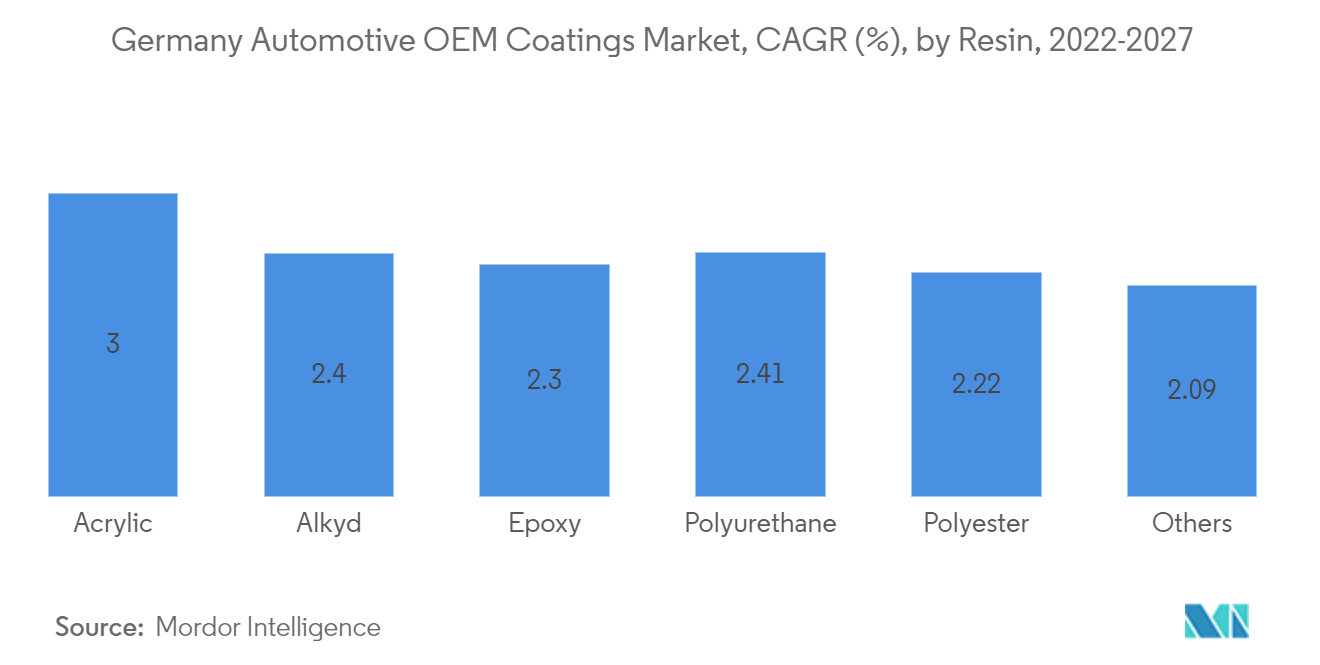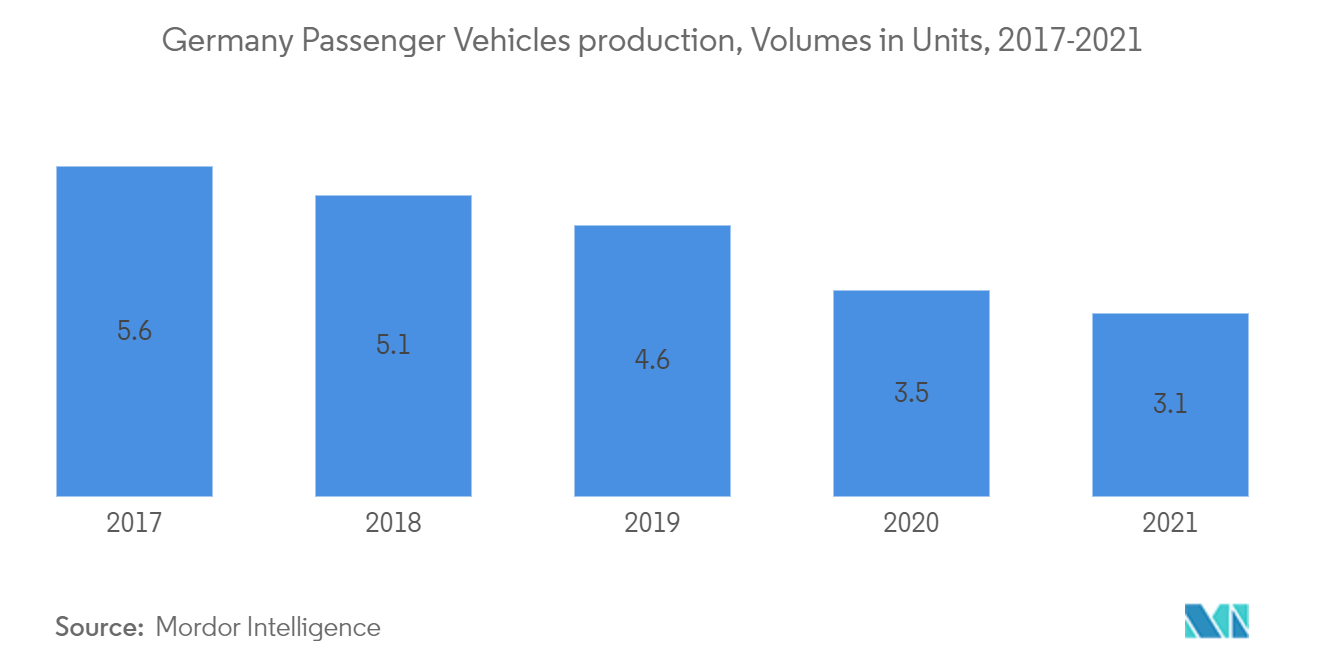Market Trends of Germany Automotive OEM Coatings Industry
The Acrylic Resins Segment to Register Higher Growth Rate
- Acrylic resins are polymeric materials containing acrylic monomers in the form of dispersion, solid, and solution. These monomers are usually esters of methacrylic acids, acrylics, and other derivatives.,
- Acrylic resins are used for stoving enamels for industrial appliances (machines and equipment) and primarily for automotive OEM finishes, mainly topcoats, base coats, and clear coats. They have major performance advantages regarding gloss, exterior durability, corrosion resistance, chemical resistance, solvent resistance, and hardness.
- Acrylic resins develop properties such as transparency, high color ability, and UV resistance in coating solutions. They are often used in water-borne systems, which results in low VOC emissions. The demand for water-borne acrylic resins is increasing since they are environmentally friendly products that can reduce odor and solvents used in paint. Similarly, solvent-borne acrylic resins have a homogeneous film with excellent workability and fast-drying properties. Therefore, they are used for automotive OEM applications.
- In Europe, Ford recently announced its plans to bring three new passenger electric vehicles and four new commercial electric vehicles by 2024. By 2026, the automotive company said, it wants to sell more than 600,000 EVs in the region every year and to have all sales in Europe zero-emission by 2035.

The Passenger Cars Application Segment to Dominate the Market
- Passenger cars are vehicles designed for the carriage of passengers and comprising no more than eight seats in addition to the driver's seat. The passenger car can carry a maximum mass of 3.5 tonnes.
- Germany is one of the largest passenger car markets in Europe. In 2018 and 2019, the country's automotive vehicle production declined. This was due to factors such as the implementation of the new Worldwide Harmonized Light-Duty Vehicles Test Procedure (WLTP) and US-China trade conflicts which decreased the international automotive demand, and EU-28's new emission standard, which mandates carmakers to achieve average CO2 emissions of 95 grams per kilometer across newly-sold vehicles.
- In 2020 passenger car production further declined from 4.7 million in 2019 to 3.8 million units in 2020 due to operational and trade restrictions resulting from the COVID-19 pandemic. The further decline of automotive OEM coatings demand in 2021 was due to the shortage of semiconductor chips, forcing manufacturers to cut down the production of vehicles. The supply chain constraints and chip shortages are expected to restrict the growth of demand for automotive OEM coatings during the forecast period.
- However, in 2022, the increasing production of electric vehicles in Germany revived the automotive OEM coatings market. According to the Federal Statistical Office, in 2021, Germany produced 328,000 units of electric vehicles worth USD 14.65 billion. Electric vehicle production increased by 85.8% as compared to 2020.
- Similarly in 2022, In Germany, the big three auto manufacturers Volkswagen, Mercedes, and BMW are investing more than USD 106 billion into scaling up an entirely new infrastructure of platforms, battery plants and software to deliver a new generation of electric vehicles.

